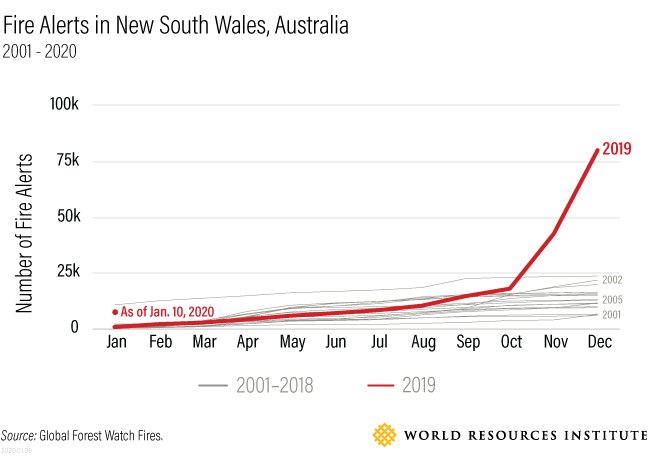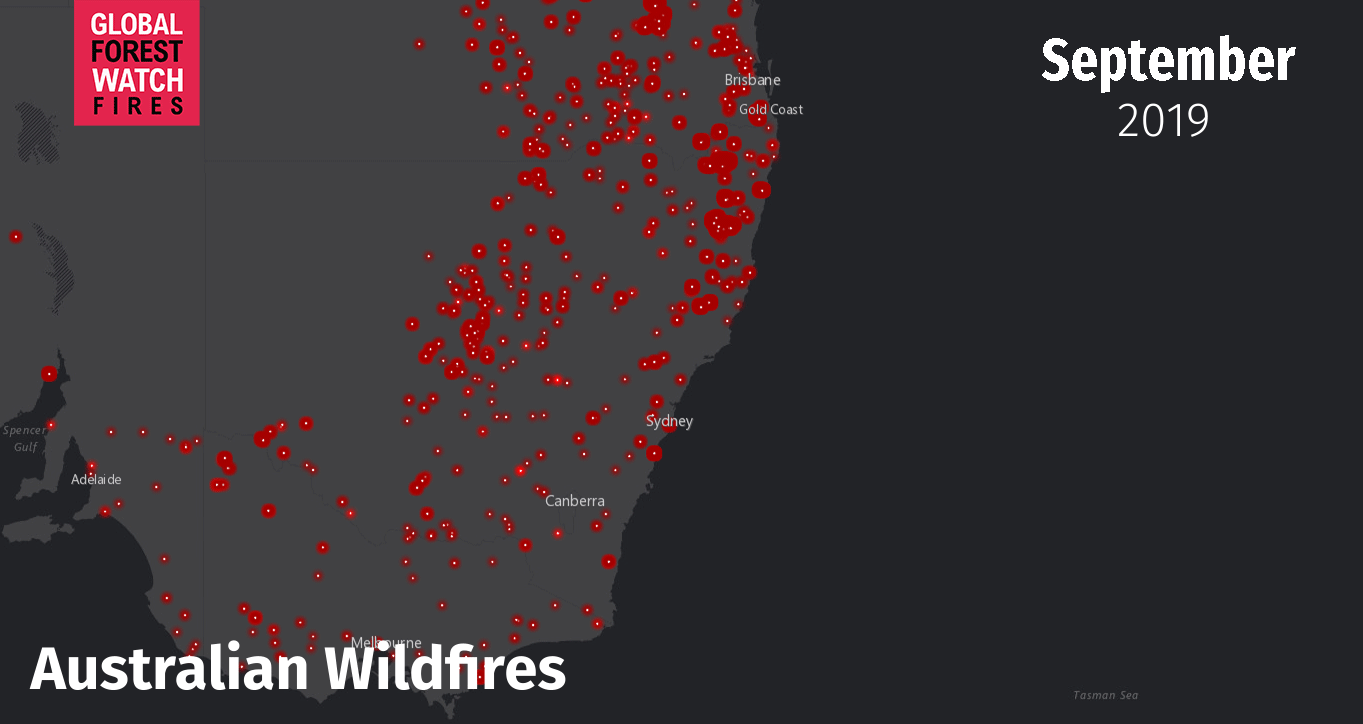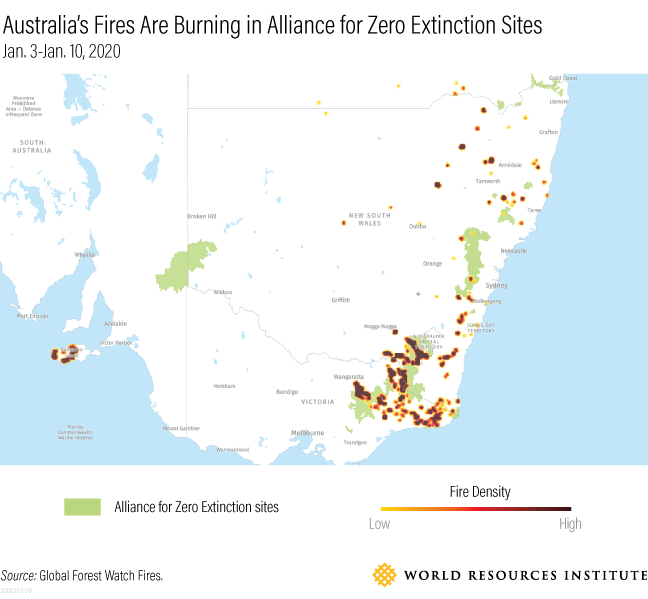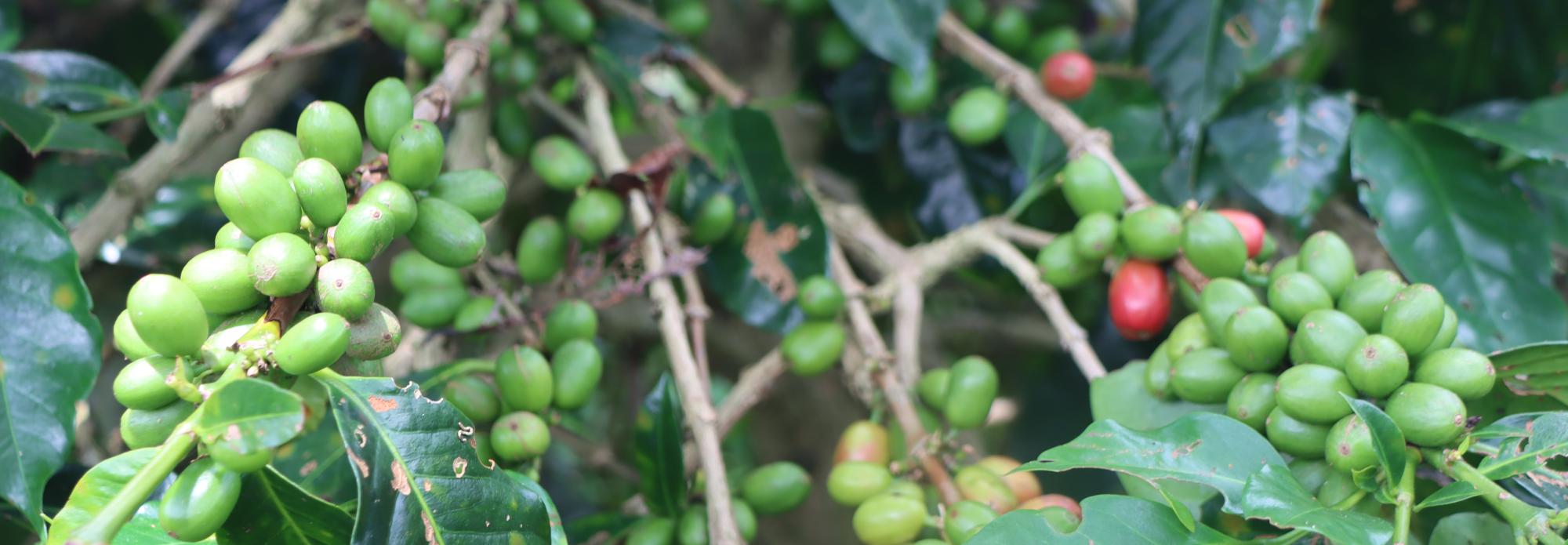- Forest Insights
4 Things to Know About Australia’s Wildfires and Their Impacts on Forests

Australia’s bush fires are the worst in the country’s recorded history. Already, millions of acres have burned, creating dangerous levels of air pollution, displacing nearly 90,000 people and killing a billion animals. Global Forest Watch Fires sheds light on what’s happening in Australia and the impacts fires could have:
1) Australia’s fires are seriously unprecedented.
The number of fire alerts in New South Wales in 2019 was roughly 4 times higher than any time in the past two decades. There were already 9,360 fire alerts in just the first 10 days of 2020.

The zone covered by fire alerts in New South Wales, Victoria, Queensland and South Australia since September is larger than 6 million hectares, an area the size of Croatia.
2) Extreme weather conditions have turned something familiar into something abnormal.

Global Forest Watch Fires shows that more than 70% of the fires are burning on forested landscapes, mainly different types of Eucalyptus woodlands. Eucalyptus trees are naturally more flammable than many other species, and bushfires in Australia are part of the natural ecology. Australia’s flora and fauna are adapted to fire through millennia of evolution, under normal conditions.
But this year is anything but normal. Unprecedented dryness, high temperatures and strong winds have combined to create a tinderbox, carrying fires over larger distances and engulfing more towns than ever before. Much of Australia has experienced rainfall deficits over the past 20 months greater than any other time on record.
 Eucalyptus forest. Photo by Peter Woodard/Wikimedia Commons
Eucalyptus forest. Photo by Peter Woodard/Wikimedia Commons3) Roughly a billion animals have been impacted by fires in Australia, and some species may not be able to recover.
Fires are moving too fast for dehydrated animals to get out of the way, and they are burning too hot to leave any trees standing in their wake. Many surviving animals have no safe habitat in which to retreat.
The lasting damages could be severe and irreparable for some species. We found that about 40% of the fires are burning on legally protected areas like national parks and conservation zones, areas especially important for animals that reside only in Australia’s unique forest ecosystems, such as koalas and brush-tailed rock wallabies. Australia has the fourth-largest area of forests in the world for “high biodiversity significance,” shown in purple on the map below. Many of the fires are burning in these habitats critical for wildlife.

And for “endemic” species, a relatively small patch of land is their only habitat on Earth, areas shown in the green “Alliance for Zero Extinction” (AZE) sites in the map below. Fires are also burning in and around Australia’s AZE sites, threatening the very existence of entire species like the Wollemi pine tree and the Corroboree frog.

4) Climate change will make fire-prone conditions more common in Australia.
Regardless of which types of forests are burning, weather generally plays a large role in the severity of fires and how quickly they spread. A report from the Intergovernmental Panel on Climate Change (IPCC) warns that dust storms, droughts and heat waves will likely worsen in Australia without significant emissions reductions, possibly extending the length of the country’s fire season. Fires and the trees they burn also release large amounts of carbon into the atmosphere, creating a positive feedback loop — more carbon means more extreme weather events, and in many places like Australia, this means more severe fires.
![[OPTIONAL DESCRIPTION]](https://content.globalforestwatch.org/wp-content/uploads/2020/01/koalas.jpg) Koalas are one of many species unique to Australia’s forest ecosystems. Photo by Matthias Appel/Flickr.
Koalas are one of many species unique to Australia’s forest ecosystems. Photo by Matthias Appel/Flickr.Preventing Australian Fires from Becoming More Common
Australia’s fires have created devastation on an unprecedented scale. They also underscore the dependencies between forests and the climate – on the one hand, forests sequester massive amounts of carbon from the atmosphere; on the other, they are highly vulnerable to the impacts of climate change. Reining in emissions immediately is one of the most important tactics for ensuring Australia’s abnormal blazes do not become commonplace.


